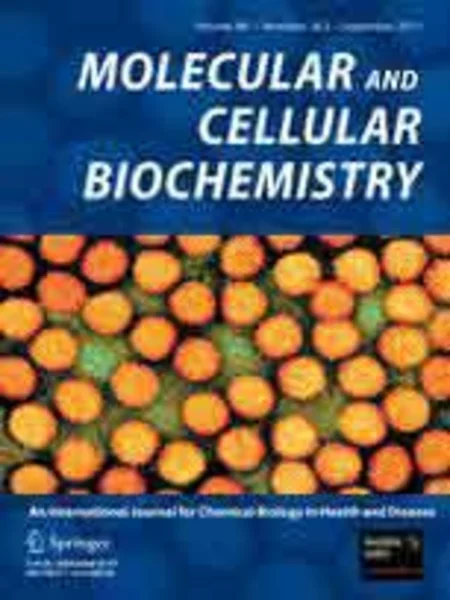-
characterization of a unique motif in lim mineralization protein-1 that interacts with jun activation-domain-binding protein 1
جزئیات بیشتر مقاله- تاریخ ارائه: 1392/07/24
- تاریخ انتشار در تی پی بین: 1392/07/24
- تعداد بازدید: 801
- تعداد پرسش و پاسخ ها: 0
- شماره تماس دبیرخانه رویداد: -
development and repair of the skeletal system and other organs are highly dependent on precise regulation of the bone morphogenetic protein (bmp) pathway. the use of bmps clinically to induce bone formation has been limited in part by the requirement of much higher doses of recombinant proteins in primates than were needed in cell culture or rodents. therefore, increasing cellular responsiveness to bmps has become our focus. we determined that an osteogenic lim mineralization protein, lmp-1 interacts with smurf1 (smad ubiquitin regulatory factor 1) and prevents ubiquitination of smads resulting in potentiation of bmp activity. in the region of lmp-1 responsible for bone formation, there is a motif that directly interacts with the smurf1 ww2 domain and thus effectively competes for binding with smad1 and smad5, key signaling proteins in the bmp pathway. here we show that the same region also contains a motif that interacts with jun activation-domain-binding protein 1 (jab1) which targets a common smad, smad4, shared by both the bmp and transforming growth factor-β (tgf-β) pathways, for proteasomal degradation. jab1 was first identified as a coactivator of the transcription factor c-jun. jab1 binds to smad4, smad5, and smad7, key intracellular signaling molecules of the tgf-β superfamily, and causes ubiquitination and/or degradation of these smads. we confirmed a direct interaction of jab1 with lmp-1 using recombinantly expressed wild-type and mutant proteins in slot-blot-binding assays. we hypothesized that lmp-1 binding to jab1 prevents the binding and subsequent degradation of these smads causing increased accumulation of osteogenic smads in cells. we identified a sequence motif in lmp-1 that was predicted to interact with jab1 based on the mame/mast sequence analysis of several cellular signaling molecules that are known to interact with jab-1. we further mutated the potential key interacting residues in lmp-1 and showed loss of binding to jab1 in binding assays in vitro. the activities of various wild-type and mutant lmp-1 proteins were evaluated using a bmp-responsive luciferase reporter and alkaline phosphatase assay in mouse myoblastic cells that were differentiated toward the osteoblastic phenotype. finally, to strengthen physiological relevance of lmp-1 and jab1 interaction, we showed that overexpression of lmp-1 caused nuclear accumulation of smad4 upon bmp treatment which is reflective of increased smad signaling in cells.
مقالات جدیدترین رویدادها
-
استفاده از تحلیل اهمیت-عملکرد در ارائه الگوی مدیریت خلاقیت سازمانی و ارائه راهکار جهت بهبود
-
بررسی تاثیر ارزش وجوه نقد مازاد بر ساختار سرمایه شرکت های پذیرفته شده در بورس اوراق بهادار تهران
-
بررسی تأثیر سطح افشای ریسک بر قرارداد بدهی شرکت های پذیرفته شده در بورس اوراق بهادار تهران
-
بررسی تأثیر رتبه بندی اعتباری مبتنی بر مدل امتیاز بازار نوظهور بر نقد شوندگی سهام با تأکید بر خصوصی سازی شرکت ها
-
تأثیر آمیخته بازاریابی پوشاک ایرانی بر تصویر ذهنی مشتری پوشاک ایرانی (هاکوپیان)
-
بررسی اثر ارتعاشات قطار زیر زمینی شهر قم بر بنای تاریخی سر درب مدرسه غیاثیه
-
فلسفه تکنولوژی بر مبنای صدرالمتالهین و از منظر هایدگر
-
بررسی حساسیت کژدم های خطرناک استان هرمزگان نسبت به حشره کش های شیمیایی پیشنهادی who
-
مروری بر آزمایش های مربوط به ستون های لوله فولادی بیضوی پر شده با بتن خود متراکم
-
enhancement of wear resistance of ductile iron surface alloyed by stellite 6
مقالات جدیدترین ژورنال ها
-
مدیریت و بررسی افسردگی دانش آموزان دختر مقطع متوسطه دوم در دروان کرونا در شهرستان دزفول
-
مدیریت و بررسی خرد سیاسی در اندیشه ی فردوسی در ادب ایران
-
واکاوی و مدیریت توصیفی قلمدان(جاکلیدی)ضریح در موزه آستان قدس رضوی
-
بررسی تاثیر خلاقیت، دانش و انگیزه کارکنان بر پیشنهادات نوآورانه کارکنان ( مورد مطالعه: هتل های 3 و 4 ستاره استان کرمان)
-
بررسی تاثیر کیفیت سیستم های اطلاعاتی بر تصمیم گیری موفق در شرکتهای تولیدی استان اصفهان (مورد مطالعه: مدیران شرکتهای تولیدی استان اصفهان)
-
کاربرد شناساگرهای زیستی در ارزیابی محیط زیست
-
اسکن فانتوم، گامی مهم در کالیبراسیون اولتراسوند سه بعدی و مقایسه روش های مختلف آن
-
بررسی رابطه بین افشای مسئولیت اجتماعی شرکت و سهم بازار
-
رفتارهای انحرافی در سازمان: تبیین نقش ادراک حمایت سازمانی و بی عدالتی، ناکامی و شخصیت
-
اثربخشی تصویرسازی ذهنی بر میزان نشخوار فکری و امید به زندگی نوجوانان افسرده شهرستان بابل




سوال خود را در مورد این مقاله مطرح نمایید :